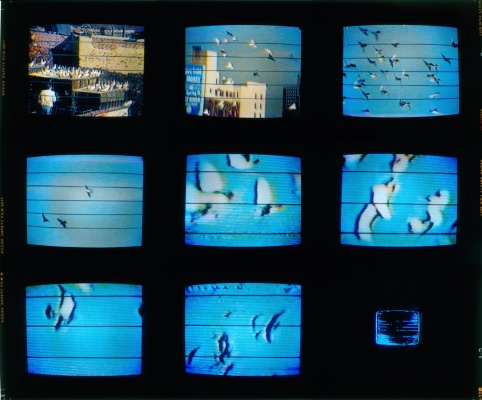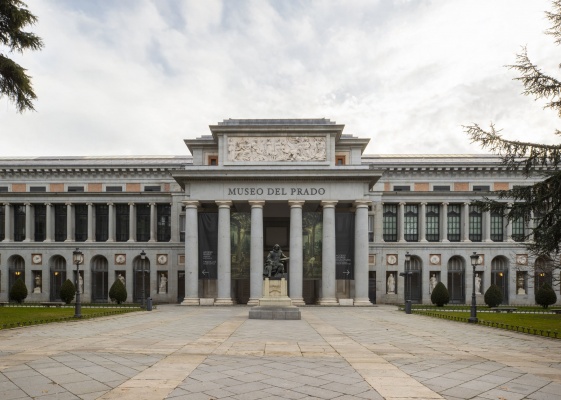Descripción de la Exposición
Artistas: Siri Aurdal, Hannah Black, Imogen Cunningham's photographs of Martha Graham, N. Dash, Moyra Davey, Marley Freeman, Rosemary Mayer, Senga Nengudi, Valerie Piraino, Elena del Rivero, Marina Rosenfeld, Mira Schor, Lucy Skaer, Molly Zuckerman-Hartung.
In 1931, Imogen Cunningham was considered to be one of the most important experimental photographers in the United States, and Martha Graham, ten years her junior, was at the forefront of the modern dance movement in New York. The auspicious encounter of these two distinct artists resulted in a significant series of photographs. Ann Daly, an essayist of women's history and culture in the arts, writes of what followed that meeting in Santa Barbara, California, "They worked outside, in front of the barn at Graham's mother's home. The afternoon was hot, the smell unpleasant and the flies bothersome, but together they managed to produce a collection of nearly 90 images, an extraordinary double-portrait of both photographer and choreographer." As the sun illuminates a gradation of contours along the dancer's face, limbs and dress, the light suddenly drops out behind her body creating a vast darkness.
In these photographs there is a sense that the images are not the evidence of something that simply happened or is simply there. Rather there is an abstract experience of seeing feeling. In the most intimate close ups, Graham's body is present as an unmediated, aware, and vulnerable form. The image is as much a self-portrait as it is a social body, with movement and weight that is imagined and regenerated as knowledge. Cunningham's Studies of Martha Graham are marked by an understanding that our vision is dynamic and form is never fixed.
The title of the exhibition comes from a line in Hannah Black's book Dark Pool Party, 2016. Whatever moves between us also moves the world in general is an exploration of affect as an embodied sensation. Central is the moment of perception, as it is felt - where there is little differentiation between a body or an object, and their environment. It is the disposition of each of the artworks to consider texture, scale, and color as energetic and social elements, with interactive and intercommunicative dimensions.
All of the artworks are marked by the semblance of an emotional body, aware of social consequence and connection. In an interview with Iman Issa, Moyra Davey talks about starting with a specific idea that is personal to her, something revealing that in turn enables her to speak about "larger things". Davey has quoted Chantal Akerman, "I haven't tried to find a compromise between myself and others. I have thought that the more particular I am, the more I address the general". Davey's 50 Photographs, reveals a living home that bears the traces of the bodies it has held. Some of the objects in these photographs resemble N. Dash's small fabric sculptures that she works by hand until they nearly disintegrate. The tactile surface of her silkscreen accentuates each expressive stroke. The artist has described the work as "an alternative recording device, where the body has the capacity to register information through touch onto the material." Hannah Black's video, The Neck is a rhythmic mediation that begins with a story of a child's drawing and, at a rapid pace, blends individual experience and memory with humor and historical narrative filling the gallery with a vibrant voice force.
An emotional act is evident in the arrangement of discarded and overlooked objects by Senga Nengudi, Valerie Piraino, and Elena del Rivero. These representations of domesticity, displacement, and personal loss are felt through varying modes of hanging in which weight and materiality embody these immediate and unstable sensations.
Some of the artists' approach is perceptibly autobiographical in order to address a collective concern while others use abstraction to communicate the ineffable. The precariousness of material transmission is incarnated in the scenes that Lucy Skaer has extracted from the Pool Group's 1930 silent film Borderline. The intruder with fibrous edges was made with a ticket punch with which Skaer clipped each frame of the 16 mm film. The same shape is replicated as a pair of elongated glass sculptures that, together with the film, accentuate the tension between form and reproduction.
By devising personal systems and patterns, and by utilizing mathematics Siri Aurdal, Marley Freeman, Rosemary Mayer, Marina Rosenfeld, and Molly Zuckerman-Hartung present an image of a lyrical world that resists language and is instead organized through color, sound, and repetition. In Mayer's 2001 Noise Drawings, sounds heard outside of the artist's Tribeca studio are recorded and translated through color. Considering color and sound as reciprocal transmitters, Rosenfeld's performance, roygbiv&b, evokes the frequencies of the rainbow. In these works, shifting values position language as secondary, made visible only through abstraction and accumulation. For Mayer, an artist who was distanced from the commercial art world, the window was a way to engage with a recalibrating world. Zuckerman-Hartung's Dirty Window paintings are thick soiled grids with closed surfaces. Akin to the layered sounds of pre-9/11 downtown Manhattan, on one side the paint and dyes are seeping into the seams, bumping boundaries, and changing course, while the other side absorbs and pushes back. In the works of Mira Schor and Marley Freeman barely-there brush strokes, textile patterns, and narrative pictures capture contradictions of clarity, living in a constant flux of transparent surfaces layered on top of opaque surfaces layered on top of transparent surfaces.
The physical presence of the artwork in public space is most visible in the works of Aurdal and Nengudi. In the words of Nengudi, "there is a charging that takes place, an activation of mutual energy, in concert with the sculpture". Aurdal's large-scale sculptures in parks and schoolyards in Norway were intended for direct interaction with bodies and designed to allow unrestricted movements that can lead to unrestricted thoughts.
Each of the artists in the exhibition embraces this powerful idea of unrestricted thoughts and sensitivity, alongside a desire for something to emerge from an interconnected and social moment.

Exposición. 08 may de 2025 - 14 sep de 2025 / MNAC - Museu Nacional d'Art de Catalunya / Barcelona, España

Formación. 30 oct de 2025 - 11 jun de 2026 / Museo Nacional del Prado / Madrid, España